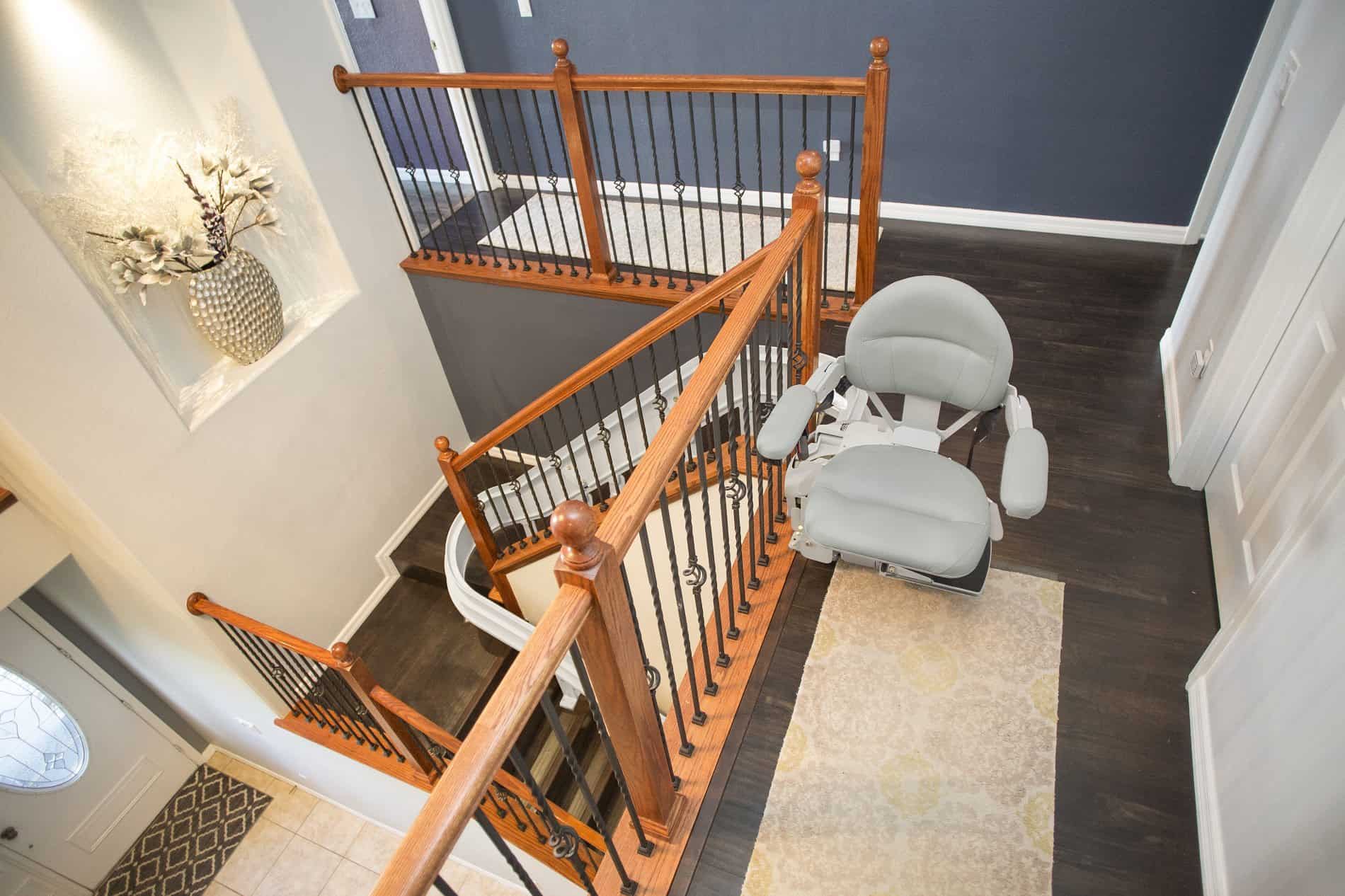Adjusting to a new stairlift doesn’t take long in fact, you may be surprised by how quickly you acclimate to the ease and convenience that these mobility aids provide. There are a few useful tips as well as troubleshooting tweaks that can make the transition even smoother. Here is what every stairlift owner needs to know!
A new stairlift can enhance access and improve everyday living for many but how do you adjust to a new lift and make it work smoothly in the home? As with any mobility aids, people tend to acclimate over time but there are some tips, tricks, and tweaks that can make the adjustment to stairlifts fool-proof.
Got a new stairlift? Here are some tips to make it work better for you:
- New lifts have seatbelts installed for a reason, it is crucial to buckle up for safety. Always use the seat belt and secure it on any ascent or descent to prevent a potentially serious fall and injury.
- Remember that a stairlift is not a toy and should not be used, played around, or climbed on by children. Adults should always supervise children and pets around mobility equipment, including and perhaps, particularly when it comes to stairlifts.
- Take a look around to ensure no pets or obstructions are in the way before using the lift to ascend or descend your stairs or steps. While most contemporary stairlifts are equipped with obstruction sensors that will stop the lift from moving when there is something in the path, make a habit of looking and making sure that nothing is in harm’s way before operating your lift.
- Loose or flowing garments, clothing, and accessories can become trapped underneath the lift and cause serious harm. Not to mention, these loose items and subsequent issues can cause damage to your lift, also. Keep loose-fitting clothing clear from the lift before you operate it.
- Do not try to transport open bottles or cups containing liquids. Liquids and stairlifts do not mix! In fact, liquids can do serious and irreversible damage to a stairlift so avoid drinking and open beverages near or around the lift, too.
- Remember that all stairlifts are designed to carry just one person at a time. Furthermore, stairlifts have a very specific weight limit. Do not carry passengers, kids, or pets when using the stairlift. Exceeding the weightlift can cause serious damage to the lift and could potentially cause you to fall or sustain an injury. This extends to carrying heavy loads up or down the stairs; do not do it. Check the lift’s owner’s manual for the exact weight restrictions for your make and model.
- Regular maintenance by a qualified mobility professional is key to the longevity and smooth operation of your stairlift. If you experience issues with any of the functions or features of your lift, contact the mobility retailer where you bought it. Do not attempt to use it if you are experiencing issues with any of the safety features, or if the lift itself is acting oddly. Never attempt to repair, fix, or modify the lift on your own; allow only qualified technicians to work on your stairlift. More on that later!
Got a question or an issue with your lift? Try these tweaks when troubleshooting the problem:
- Is the master switch turned on? Check this before you proceed. Remember that all switches must be activated and in the ‘on’ position for the lift to operate.
- Check the position of your stairlift’s key. The key must be fully pushed in and turned to the ‘on’ position on the lift.
- Is the charger for the battery plugged in? Stairlift batteries have a long life, but they must be charged to prevent draining over time.
- What about the batteries in your stairlift remote? If these are dead, change them and check the function of the lift once more.
- If there is an obstacle in the way of the safety sensor, the lift will not operate. This is a great safety feature- particularly if there are kids or pets in the home. Clear the path, remove anything that could be in the way, and try again.
- If the seat is not swiveled into place and locked, the lift will not operate. The seat should make a clear ‘click’ sound when it is locked into the riding position- but ask your mobility retailer to find out more regarding your distinct lift safety features.
- When in doubt, always refer to the lift’s owner manual. This is an excellent resource and the best way to figure out and troubleshoot an issue.
Perhaps the best advice of all is to call a Professional when you have issues or questions regarding your new stairlift. Remember: only allow a qualified mobility technician to install, service, repair, or work on your lift. That is the safest approach- also, allowing someone else to perform these tasks may nullify any warranty that you have on your equipment. At Pacific Mobility, we stand behind, support, and service the aids and stairlifts that we sell. Call or visit us to learn more today!
President, Husband, Father, Grandfather Graduate of UC Davis- Bio Sci Major- Go Aggies! Jeff has extensive experience in all of Pacific Mobility’s products and services, and specializes in accessibility products as well as stairlifts, ceiling lifts and custom wheel chairs. His hobbies include spending time with family, gardening, mountain biking, exercising and off road motorcycle riding.
24 years as Owner/President of Pacific Mobility Center – selling, installing, and servicing stairlifts, porch lifts, ceiling lifts, pool lifts, handicap ramping, specialty wheelchairs, scooters, power wheel chairs, and other power mobility devices
Certified Environmental Access Consultant since 2008
Licensed General Contractor since 1998
Certified Aging in Place Specialist since 2016
Board Member for Home Access Professionals
Member of Association of Members of the Accessibility Equipment Industry (AEMA)




